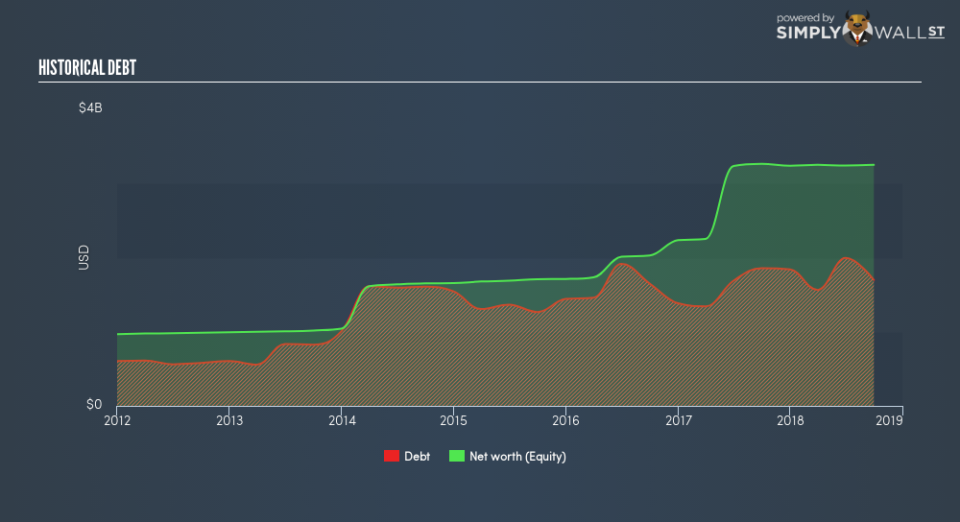What Makes United Bankshares, Inc. (NASDAQ:UBSI) A Hard Investment?

As a small-cap finance stock with a market capitalisation of US$3.1b, the risk and profitability of United Bankshares, Inc. (NASDAQ:UBSI) are largely tied to the underlying economic growth of the region it operates in US. Given that banks operate by reinvesting deposits in the form of loans, negative economic growth may lower the level of saving deposits and demand for loans, directly affecting those banks’ levels of cash flows. After the GFC, a set of reforms called Basel III was imposed in order to strengthen regulation, supervision and risk management in the banking sector. The Basel III reforms are aimed at banking regulations to improve financial institutions’ ability to absorb shocks caused by economic stress which could expose banks like United Bankshares to vulnerabilities. Its financial position may weaken in an adverse macro event such as political instability which is why it is crucial to understand how well the bank manages its risks. Strong management of leverage and liquidity could place the bank in a protected position at the face of macro headwinds. We can gauge United Bankshares’s risk-taking behaviour by analysing three metrics for leverage and liquidity which I will take you through now.
See our latest analysis for United Bankshares
Why Does UBSI’s Leverage Matter?
A low level of leverage subjects a bank to less risk and enhances its ability to pay back its debtors. Leverage can be thought of as the amount of assets a bank owns relative to its shareholders’ funds. While financial companies will always have some leverage for a sufficient capital buffer, United Bankshares’s leverage ratio of 5.9x is very safe and substantially below the maximum limit of 20x. With assets 5.9 times equity, the banks has maintained a prudent level of its own fund relative to borrowed fund which places it in a strong position to pay back its debt in times of adverse events. If the bank needs to increase its debt levels to firm up its capital cushion, there is plenty of headroom to do so without deteriorating its financial position.
How Should We Measure UBSI’s Liquidity?

Due to its illiquid nature, loans are an important asset class we should learn more about. Usually, they should not be higher than 70% of total assets, consistent with United Bankshares’s case with a ratio of 69%. This means slightly over half of the bank’s total assets are tied up in the form of illiquid loans, leading to a sensible balance between interest income and liquidity.
Does UBSI Have Liquidity Mismatch?
A way banks make money is by lending out its deposits as loans. These loans may be fixed term and often cannot be readily realized, conversely, on the liability side, customer deposits must be paid in very short notice and on-demand. The disparity between the immediacy of deposits compared to the illiquid nature of loans puts pressure on the bank’s financial position if an adverse event requires the bank to repay its depositors. Compared to the appropriate industry loan to deposit level of 90%, United Bankshares’s ratio of over 94% is higher which positions the bank in a risky spot given the potential to cross into negative liquidity disparity between loan and deposit levels. Basically, for $1 of deposits with the bank, it lends out over $0.9 which is imprudent.
Next Steps:
The bank’s prudent management of its risk levels is reflected in its sensible leverage and liquidity ratios. Its high liquidity and low leverage levels mean it is well-positioned to meet its financial obligations in the case of any adverse and unpredictable macro events. We’ve only touched on operational risks for UBSI in this article. But as a stock investment, there are other fundamentals you need to understand. I’ve put together three pertinent aspects you should further examine:
Future Outlook: What are well-informed industry analysts predicting for UBSI’s future growth? Take a look at our free research report of analyst consensus for UBSI’s outlook.
Valuation: What is UBSI worth today? Has the future growth potential already been factored into the price? The intrinsic value infographic in our free research report helps visualize whether UBSI is currently mispriced by the market.
Other High-Performing Stocks: Are there other stocks that provide better prospects with proven track records? Explore our free list of these great stocks here.
To help readers see past the short term volatility of the financial market, we aim to bring you a long-term focused research analysis purely driven by fundamental data. Note that our analysis does not factor in the latest price-sensitive company announcements.
The author is an independent contributor and at the time of publication had no position in the stocks mentioned. For errors that warrant correction please contact the editor at editorial-team@simplywallst.com.

 Yahoo Finance
Yahoo Finance 
